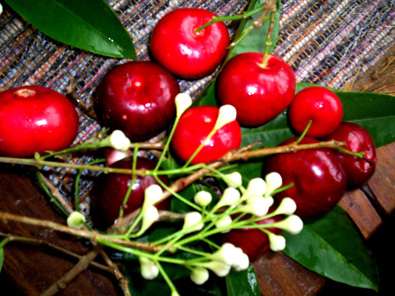Exploring the wild-growing plants has been one of the initiatives of the government now particularly the agriculture department. There have been programs and projects on the protection and cultivation of indigenous plants. Research efforts are being pulled into in order to exploit the potentials these wild, indigenous crops in the country. “Farmers are encouraged to produce fruit crops thereby promoting sustainable agriculture in the uplands,” said Dr. Ronald O. Ocampo of the Apayao State College (ASC).
The province of Apayao houses some of the country’s indigenous crops including: lubeg, bignay, bignay kalabaw, calumpit, saging matsing, other than the fruit-bearing trees like durian, marang, lanzones, rambutan, pineapple, mangosteen, coconut, santol, among others. Given this, Apayao is dubbed as the “Cordillera’s last frontier for nature’s richness”. With the abundance in indigenous and wild growing fruits, the province of Apayao is envisioned as the prime ‘Agroforestry Center in the North’.

According to Dr. Ocampo, growing of fruit crops has various benefits including soil protection against erosion due to its profuse and widely distributed roots. With wider canopies, fruits crops are considered to have longer productive life. “They have wider tolerance to adverse soil and climatic conditions such as drought, typhoon, and strongly low ph,” Dr. Ocampo added.
Funded by the Bureau of Agricultural Research (BAR), the Apayao State College is currently working on the product improvement and commercialization of indigenous fruits in Apayao. One promising indigenous fruit in Apayao is called “lubeg”.
Lubeg (Syzygium lineatum) belongs to the family Myrtaceae. It is an erect, medium fruit tree usually 4-5 meters in height, with its leaves usually ovoid to elliptical measuring about 8-10 cm. The leaf posses a sour taste. Forty percent of total production is in Apayao and is mostly found in the Cagayan Valley with an estimated 1,000 lubeg trees grown.
Lubeg are cherry-like fruits with thick and fleshy, spongy, leather or brittle rind, oblong (ovoid or ellipsoid), up to 13 mm long. “Fruits are in cluster, whitish in appearance, and gradually turn from red to violet as they ripen. The fruits are considered to be highly perishable,” ASC researchers described.
Different processing technologies for lubeg were developed to include wine, vinegar, jam, jelly, and fruit concentrates. ASC is also processing and packaging bignay and wild banana into wine and vinegar. These fruits are believed to have anti-oxidants and anti-cancer properties.
Lubeg jam serves as fillers for fruit-based baked products like inipit, custard cake, cup cake, and even Jelly as fillers for doughnut.
To further promote and commercialize the products, three trainings on baking, wine-making, and packaging were conducted. Nutrient, total acidity, and alcohol content analysis were conducted. The nutrient analysis was made specific for lubeg jam and jelly; alcohol content for lubeg wine, bignay wine, and wild banana wine; while total acidity were conducted for lubeg vinegar, bignay vinegar, and wild banana vinegar.
The processing and production of indigenous fruits have gained impact not only to farmer-individuals but also to the community as a whole. “The project will alleviate the present socio-economic condition of the farmers, creating additional livelihood opportunities for sectoral groups including farmers, women, Out-of-School Youths (OSY), and elderly,” reported Dr. Ocampo.
The project is also considered a productive enterprise to help alleviate poverty in Apayao. To date, Elsie Sapad, one technology adopter in Luna, Apayao, is processing lubeg wine and vinegar. Likewise, the members of the Pudtol Agrarian Reform Beneficiaries Cooperative are packaging fruit-based products.
To sustain supply of fruits, the college is producing seedlings under the National Greening Program. “We also link with the local government units, people’s organizations, and other line agencies for collaboration,” Dr. Ocampo explained. The project team also established linkages between buyers, traders, and processors. ### (Ma. Eloisa H. Aquino)
Source and image: bar.gov.ph

